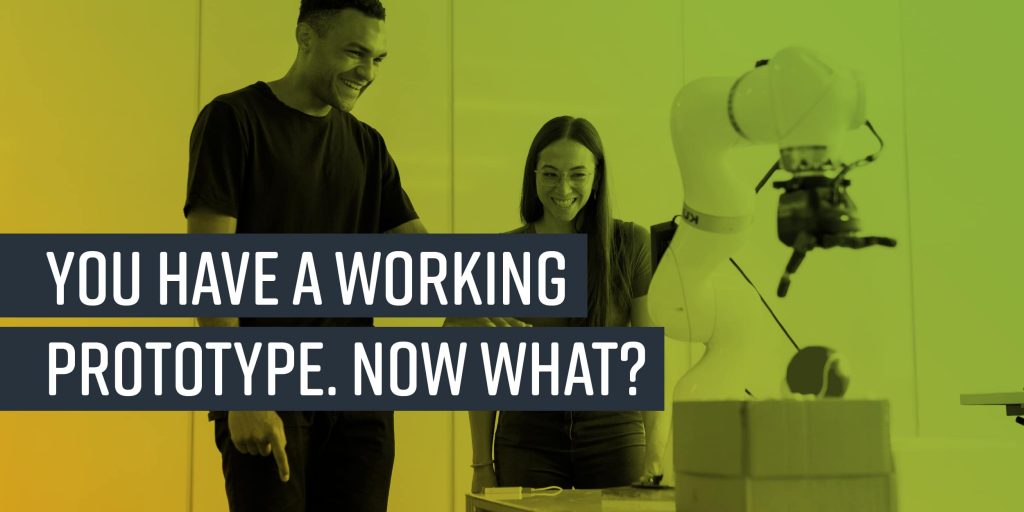Part of the challenge of getting a new invention to market is proving out the concept. For hardware companies, this is done with getting a prototype made (or multiple prototypes), which potential customers will evaluate and provide feedback for improvements. So, once you have the prototype finalized, what do you do next?
- Document your product and all its parts.
Often, the first step in preparing your prototype for the transformation into a manufacturable product is to create a detailed bill of materials (BOM) – a list of all the components that go into making your product. The biggest benefit of a well-documented BOM is that it helps identify how you can simplify your product, whether by removing parts that don’t provide any tangible benefit, consolidating parts for manufacturing simplification, or using common components like one style and size screw, instead of multiple varieties. A good BOM will also identify the cost of each component as a percentage of the total cost, so you can focus efforts on parts that will have the biggest impact on maximizing your profit.
When it comes to creating a BOM, there is no single “best” template. Since each product (and company) is unique, the criteria you chose to include in your BOM will reflect that. At a minimum, you’ll want to include unique part numbers, descriptions, costs, and vendor/source. For more advanced companies, a bill of process (BOP), which documents how all the parts are assembled into the final product, is another useful exercise to complete.
- Optimize your product design for manufacturing at scale.
As convenient as it would be to take your final prototype (or specific components) to a contract manufacturer and ask them to reproduce it in higher volumes, that is simply not realistic because the designs of prototype parts are generally not suited to large scale manufacturing methods. As an example, additive manufacturing (or 3D printing) is great for creating “one-off” prototype parts but those designs usually don’t translate to the injection molding process, which requires draft angles, consistent wall thicknesses and less complex geometries.
These types of considerations will impact the “design for manufacturability” of your product. That is, designing each part so that it can easily be manufactured using the most efficient method for the intended material. You will also want to ensure that your parts are designed for things like final product assembly, overall durability, ease of maintenance, and packaging, to name a few. Importantly, it can be exponentially more efficient to change a part design early in the process, rather than rushing into production and realizing a change needs to be made after tooling and other investments have already been made.
- Find the right manufacturing partners to work with.
Once your product design is optimized and documented (via an updated BOM and part drawings), you may be ready to approach a contract manufacturer (CM) to get the parts or assemblies quoted. The best approach here is to find CMs who have the capabilities to meet your requirements and are eager to work with companies at your stage (i.e. start-up companies).
And remember, you are trying to establish a relationship with this CM, not trying to beat them down on price, so over-communicate and be forthcoming about your company goals, target costs, and anticipated part volumes. A true partner knows that if you succeed, it helps them succeed, and vice versa.
In the effort to commercialize a new product, developing a prototype that accomplishes your goals and is accepted by potential customers is a huge hurdle. However, getting that prototype into a “production-ready” form, is a whole other challenge.
For additional help with navigating the design optimization process and creating a bill of materials, check out the Build4Scale™ website https://build4scale.llnl.gov/modules.php (Modules 2 and 3 are dedicated to these, and other related topics) or reach out to FuzeHub directly here.

